The TD Vancouver International Jazz Festival with Coast Jazz & Blues, brought this Grammy-nominated electronic artist Bonobo and his quintet to the Queen Elizabeth Theatre on June 25, 2018.
'I felt like I had a genuine learning curve on this record, diving into aspects of production that I’d not really understood before'
Simon Green – Bonobo – is fighting off a cold at his home in LA ahead of a tour supporting his sixth album, Migration.
He’s been living there for two years, and still isn’t sure what it is that appeals to such a large number of British artists who have upped sticks and moved across the pond.
“There are so many people here,” the 40-year-old says. “Jon Hopkins’ house is on the same hill as me.”
He reveals that Hopkins is the piano player on Migration’s title track: “He’s been in the same position as I have, we both moved to LA and were on our own making music, living this parallel existence on the other side of the hill.
“So we were hanging out and I was playing him ideas... I created all the little loops that it starts with – they’re all randomly generated – and set them at random and had Jon improvise.
“And that was the idea… to have the pianist improvising to this algorithm. We did about three takes from start to finish and kept it as it was.”
Green feels as though LA boasts more of a creative community than a city like New York. He moved there after spending almost three years on the road, which included an epic 18-month tour for his The North Borders album, and describes it as a haven in comparison to New York, which he found fairly stifling for creativity.
“It’s a great city, but you can’t really afford to make mistakes there, and I wasn’t engaging with the city as much. It feels like there are more reasons to be here [in LA], not just musical ones, for the soul as well. There’s a good vibe here at the minute, it’s having a moment.”
California’s otherworldly landscapes feature in the artwork for the singles on Migration – which is the follow-up to 2013's acclaimed The North Borders.
Designed by Neil Krug (Lana Del Rey, Boards of Canada), the artwork visualises a carefully considered, almost sinister sparseness in Bonobo’s music and the solitary nature of his solo work, much like his contemporary Hopkins.
Green is fascinated by the landscapes of Death Valley, “because it’s so alien compared to where I’m from.
“From being in the UK… well all the places I’ve lived have had quite lush landscapes. And this is Martian… I’m trying to get amongst it as much as I can.”
That sense of nature is present in Green’s music; the sounds he uses tend to come from acoustic sources and he steers clear of digitally created noise, preferring to craft his own sounds to add a human warmth.
“It’s sort of montage, what I do,” he explains, “it’s taking bits of sound and re-contextualising it and putting things together from two different places and seeing how they fit together. So you end up with this patchwork of stuff that I’ve recorded.”
Green’s background is hip hop, and he discovered jazz by searching through those songs and learning what the artists were sampling.
Those influences seem to have come full circle for his latest work – Migration features less of the explicit jazz influences heard on his first three albums, but continues that “cut-and-paste” sample culture.
“I think it was a time and a place with the jazz thing in the early 2000s – back when I started there was more of a fusion of loop-based dance music with jazz influences, which is still a thing... but I don’t know if it’s where my head is at right now. I’m always trying to find new things that I haven’t done before.”
Migration’s first single “Kerala” looks at the lead theme through bird patterns. Arriving on the Indian state via a Wikipedia tunnel, Green learned how a clear sign of winter in th
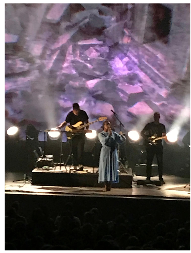
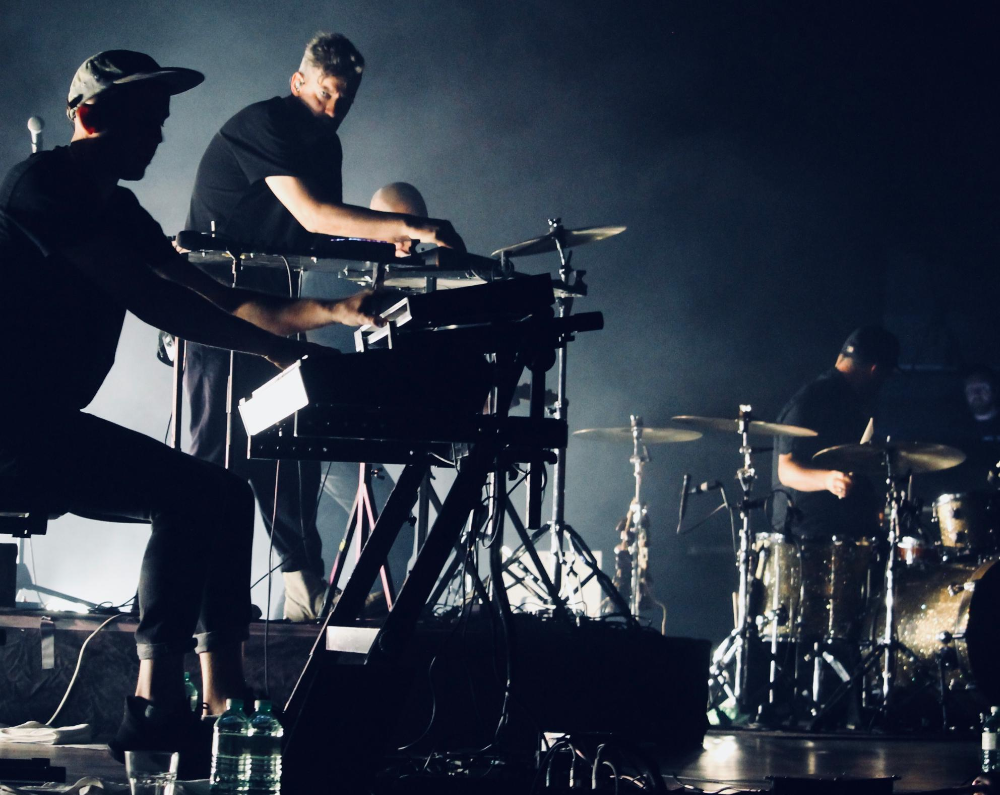
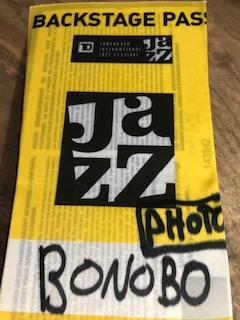

Simon Green known by his stage name Bonobo, is a British musician, producer and DJ based in Los Angeles.
He initially debuted with an inventive trip-hop sound, and has since explored more upbeat approaches while experimenting with jazz and world music.
His electronic sound incorporates the use of organic instrumentation, and is recreated by a full band during his live performances. Green is one of the most widely played producers in the world. He was a key catalyst in the downtempo electronica scene that rose up in the late 1990s, but he stood above the rest, and over two decades later, his jazz-inflicted, upbeat tempo has evolved and his DJ set progressed over the years. He will admit that technology over that time-span has changed too for the better and his amazing technical skill shines through with hypnotic soundscapes.
This multi-layered producer and DJ shares his music with an emotional depth that permeates melancholy, joy, manic highs and striking lows. This intensity is sustained on stage by a 12-strong band featuring a string quartet alongside a brass section, as well as intense, abstract projections and visuals.
One of the biggest electronic artists of our time. Green's subtle, emotional, ambiguous and deeply musical work transcends EDM clichés and creates dance music to move you emotionally and get your heart, pumping as well as your feet tapping.
The live band manifestation of his set, including keys, horns, electronics, guitar, and drums, “draws you in with his recognizable slow-burning transitions from tranquillity to sonic leavening.
Green and his band create shifting soundscapes that melange jazz, electronica, trip-hop and classical and set them to stunning visuals to create a show that is a unforgettable.
As I picked up the photo pass for this show at truly one of my favorite venues, on Monday, June 25, 2018 at Queen Elizabeth (Vancouver) , my expectations were high since my last favorite UK performers set up residence ( New Order July 8, in 2014.
My first snap from the opening of the set that night was an almost haunting moment. It began with self titled track Migration the opening track to Bonobo’s sixth album Migration.
I began taking a few shots quietly to left of the stage as one of only two photographers that night.
Simon Green looked over at me ( as captured in the top shot) as I absorbed his music for the first time live, and at that moment , at the feet of Jack Baker (drummer) and what felt like directly into my soul, I was transcended, while he orchestrated his band. I kept taking snaps until the crowd roared with applause.
The performance was dazzling and the beauty of Szjerdene's voice (left), on Towers next and her saccharine vocals permeating the theatre.
The next few numbers were relentlessly enticing tracks that fired up the audience; later pieces like Bambro Koyo Ganda, Cirrus, and Kerala added a more melodic mix to Green's upbeat sound.
It was a solid set all the way through and the with the last few beautiful songs being played and at the of the event, to my amazement an overzelous fan rushed the stage not once but twice .
I was completely overwhelmed knowing I had enjoyed a truly iconic show, and also frusterated when I saw the top of the photo pass had a backstage offering, but after that fan enthusiasm I felt like we had already had our time together.
Perhaps at Field Day 2019 we will get another interview opportunity. We will try to catch up with Bonobo next when we visit Australia and enjoy this amazing his DJ set with SLM Featured ARTists Rufus Du Sol (another SLM favorite ARTist.)

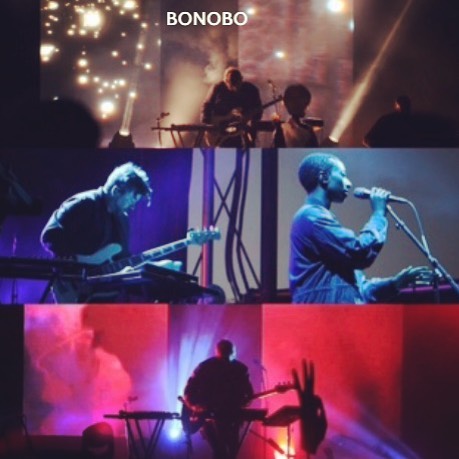

QE BONOBO JUNE 25 .2018 SHOW SLM Featured photo gallery
Sunleadsme
Sunleadsme
Sunleadsme

See the additional 2017 Festival review of Rifflandia's 10th anniversary, Featuring BONOBO here SLM Featured photos above

2013 The North Borders, brought BONOBO's sound from post-party, chilled-out jams to a more bassy beat with synths that gets listeners on their feet.
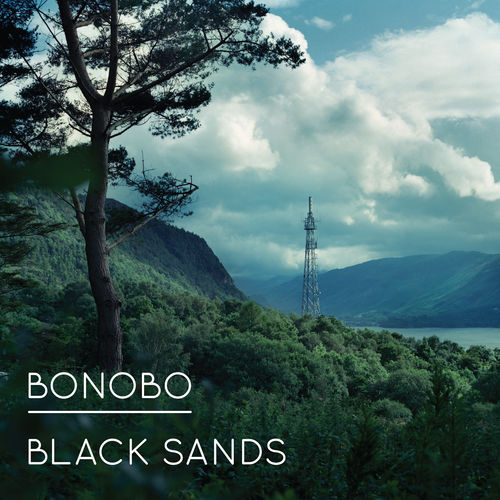
2010 BLACK SANDS RELEASE
MIGRATION : 2017 6th Album release via Ninja Tune : A closer Look
Artwork for the singles on Migration – which is the follow-up to 2013's acclaimed The North Borders. Designed by Neil Krug (Lana Del Rey, Boards of Canada), the artwork visualises a carefully considered, is a tribute to Bonobo’s music and the solitary nature of his solo work, much like his contemporary Hopkins.Green is fascinated by the landscapes of Death Valley,
That sense of nature is present in Green’s music; the sounds he uses tend to come from acoustic sources and he steers clear of digitally created noise, preferring to craft his own sounds,
"It’s taking bits of sound and re-contextualising it and putting things together from two different places and seeing how they fit together. So you end up with this patchwork of stuff that I’ve recorded.”
Green’s background is hip hop, and he discovered jazz by searching through those songs and learning what the artists were sampling. Those influences seem to have come full circle for his latest work.
Migration features less of the explicit jazz influences heard on his first three albums.
Migration’s first single “Kerala” looks at the lead theme through bird patterns.
“I was keeping a thread of migration themes, and there are a lot of migratory birds that will head to Kerala, so I thought that’d be a nice point on the album,” he says.
The song, which has a video starring Gemma Arterton, was put together as Green moved through the US, and explores that idea of travelling to other lands with its stop-and-start beats, evoking the sense of pausing for rest before continuing the journey.
Taking the opposite approach, of exploring different samples and manipulating them gradually as the song evolves, is best-summarised in “Outlier”.
It’s one of the standout tracks on the record: crunching beats at the intro are laid beneath woozy synths as, over almost eight minutes, the song builds and builds in tension then releases to an exquisite lull.
Music videos have also played a role in shaping the narrative of the album after its release. Whether by professionals commissioned for a project such as London based director, BISON, or by fans who have taken up the challenge of making alternative videos, each have added other dimensions to the theme of liminality.
All in all, Green says he’s happy with everything that has been created out of Migration. Two videos which accompany the track entitled Break Apart have stood out for Green as being particularly creative in their interpretation of the song.
At its core, Migration is about the movement of people and their loose connections worldwide. "It comes down to that whole idea — just the effect that people have on their spaces and how people take their culture, travel with it, and then plant it elsewhere," Green says.
While his stint as a nomad provided a neat thematic mould to work within, it clearly had a huge sonic influence too. As an album in transit, Migration was both recorded during, and for, those long stares out the window. The soporific loops that usher in the title track start a sentimental drift from cloud to cloud that's only briefly disturbed by the more turbulent moments of subsonic thump and 2-step percussion. Yet even these rougher tracks are still ethereal enough that they might just float into the ozone and join their tender comrades — "Kerala" has that uplifting harp and warm, encouraging vocals, while "Outlier" eventually disintegrates into a mist of muted strings and keys. Put simply, Migration is Bonobo's most reflective work to date.
Green ultimately thinks music needs to be "a reflection of the era you're living in," and that it has to evolve. "You have to engage with the current palette of the world, and what that sounds like.
Despite this sentiment, Migration is still reflective at times. While it doesn't totally harken back to his earlier albums, it's by no means a sea change either. Any long-term fans will likely get an occasional shiver that brings them right back to the jazzy trip-hop of Animal Magic and Dial 'M' for Monkey
“The end of this whole album cycle is on the horizon, so I’m transitioning back into whatever is next,” Green says, “but I’m still coming out of a very frenetic two years. I’ve come back to being
e northern hemisphere is the abrupt arrival of thousands of birds from Siberia, Mongolia and other areas north of the Himalayas.
“I was keeping a thread of migration themes, and there are a lot of migratory birds that will head to Kerala, so I thought that’d be a nice point on the album,” he says.
Taking the opposite approach, of exploring different samples and manipulating them gradually as the song evolves, is best-summarised in “Outlier”. It’s one of the standout tracks on the record: crunching beats at the intro are laid beneath woozy synths as, over almost eight minutes, the song builds and builds in tension then releases to an exquisite lull.
“I felt like I had a genuine learning curve on this record, diving into aspects of production that I’d not really understood before. I had a lot of people coming through the studio as well, which is the other thing about LA, there’s this exchange of ideas which I hadn’t had for a while. We were just messing around and trying to learn some stuff.”



